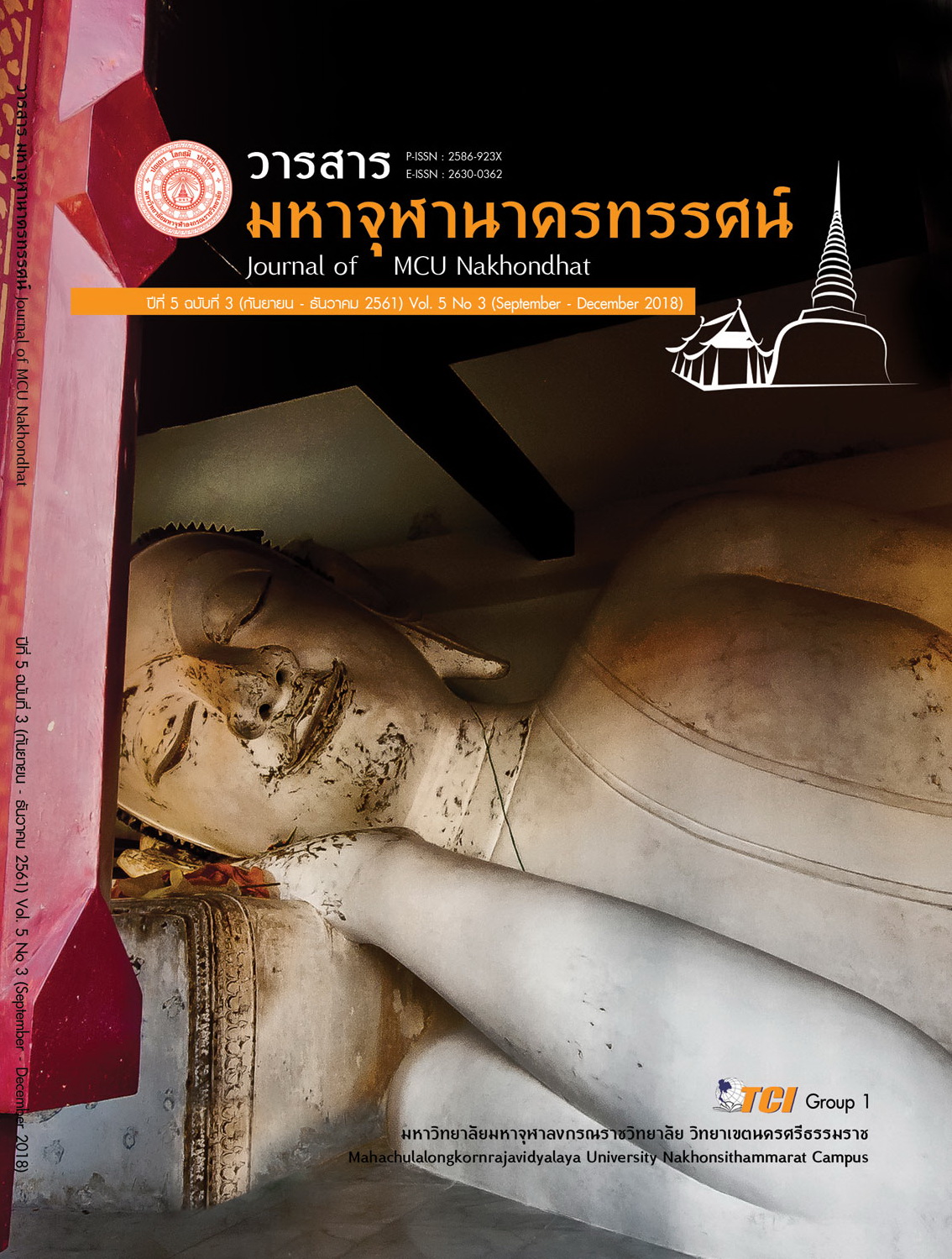AN ANALYSIS OF NIBBĀNA IN BUDDHADĀSA’S PERSPECTIVE BASED ON THERAVĀDA BUDDHIST SCRIPTURES.
Main Article Content
Abstract
This dissertation entitled ‘An Analysis of Nibbāna in Buddhadāsa’s Perspective Based on Theravada Buddhist scriptures’ has three objectives: 1) to study Nibbāna in Theravāda Buddhist scriptures, 2) to study Nibbāna in Buddhadāsa’s perspective, and 3) to analyze Nibbāna in Buddhadāsa’s perspective based on Theravāda Buddhist scriptures. This is a documentary research.
In the research, it was found that according to Theravāda’s perspective, Nibbānabasically means a state from which one’s mind is freed all defilements; it is unconditioned, it by nature is independent from any conditions. In Theravāda Buddhism, two kinds of Nibbāna are categorized; one is with the substratum of life remaining and without any substratum of life remaining. Besides, sometimes the Buddha used to explain the state whereby the defilements are extinguished through the absorption or wisdom in the name of Sanditฺtฺhikanibbāna, Ditฺtฺhadhammanibbāna and Tadaṅganibbāna.
According to Buddhadāsa’s perspective, Nibbāna refers to the state where one’s mind is bereft of impurities of ‘I’ ‘mine’ and in this state the emptiness acquired through wisdom is caused; such emptiness is not material or mental. By virtue of this, three types of Nibbāna, Tadaṅganibbāna, Vikkhambhananibbāna and Samucchedanibbāna are mentioned by Buddhadāsa respectively. The mentioned concepts can be summarized into two levels, Tadaṅganibbāna and Vikkhambhananibbāna by which they become temporary, but Samucchedanibbāna becomes perfect and thereby falling into two kinds as were mentioned earlier.
In analytical aspect, Nibbānain Buddhadāsa’s perspective according to Theravāda Buddhist scriptures. Nibbāna does not divert from the scriptures, Tadaṅganibbāna, Vikkhambhananibbāna was not direct conflict to the scriptures but his explanation was point to some meaning of them. In finally,Buddhadāsa’s main purpose is to explain Nibbāna in ethic aspect and aim to develop the understanding to achieve in Nibbāna in present moment. Buddhadāsa’s main purpose is to explain Nibbāna in ethic aspect and aim to develop the understanding to achieve in Nibbāna in present moment.
Article Details
References
มงคล เดชนครินทร์. กรุงเทพมหานคร: จุฬาลงกรณ์มหาวิทยาลัย.
พุทธทาสภิกขุ. (2544). ชุมนุมเรื่องยาว. กรุงเทพมหานคร: ธรรมสภา.
มหาจุฬาลงกรณราชวิทยาลัย. (2539). พระไตรปิฎกภาษาไทยฉบับมหาจุฬาลงกรณราชวิทยาลัย. กรุงเทพมหานคร: มหาจุฬาลงกรณราชวิทยาลัย.


